Vehicle Basics
Vehicle engine powered by fossil fuels (petrol or diesel), producing harmful emissions.
Vehicle powered by electric motor, either in full or in part.
Vehicle that integrates a small battery and an electric motor to enhance the efficiency of the ICE engine. Battery’s charge is maintained by the ICE engine and cannot be charged by plugging into an electrical supply. Can travel very short distances on electric power only (eg Toyota Prius).
Similar to HEV but with a larger battery that can be charged by plugging into a regular electricity supply. Possible to make short journeys on electric power and longer journeys on ICE power (eg. BMW 330e, Mercedes C350e).
Vehicle powered by electric motor with auxiliary power unit, usually a small ICE engine, that acts as a generator to maintain a minimum charge level on the battery (eg. BMW i3 Rex).
All-electric, battery-powered vehicle (eg. Tesla, BMW i3, Nissan Leaf).
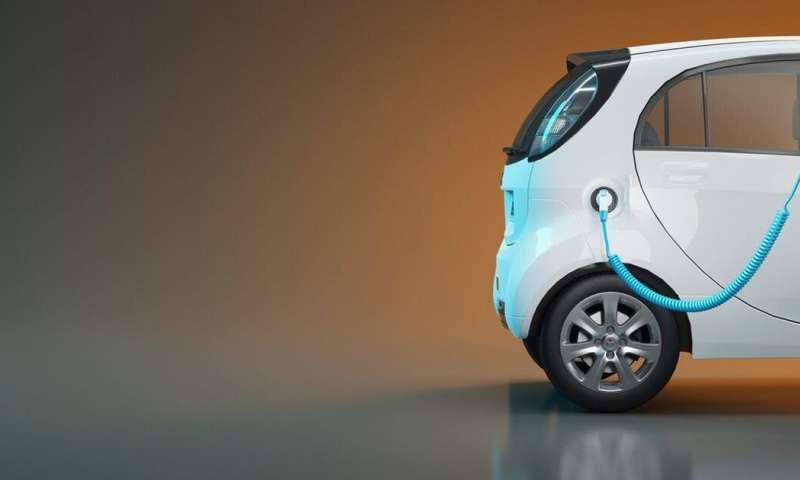

Electrical terms
A unit of measure of the rate of electricity flow or how fast the electricity is flowing at this moment. South African domestic sockets are rated to provide up to 15 / 16 Amps.
A unit of measure of electrical voltage or the strength of the electricity supply. South Africa’s standard voltage is 230 V.
A unit of electric power which determines the speed of charging. Electrical power (Watt) is simply the voltage (V) multiplied by the current (A). Kilowatt (kW) = (V x A) / 1000.
Unit of energy equivalent to the energy transferred or expended in one hour by one kilowatt of power. Electric vehicle battery size is measured in kilowatt-hours, essentially the EV equivalent of fuel tank capacity measured in litres.
CHARGING METHODS
The type of electricity that reverses direction at regular intervals, which is the standard type of electricity supplied by utilities (Eskom or Municipalities) to homes and businesses.
The type of electricity that flows in one direction, which is the type of electricity supplied by batteries.
EV batteries can only be charged with DC power. The difference between AC and DC charging is where the conversion takes place. With AC charging the conversion takes place inside the vehicle by an “On-board Charger”. With DC charging the conversion takes place outside the vehicle by a “DC Fast Charger”.
The standard type of electricity supplied to most homes and small business, comprising of three conductors, Live, Neutral and Earth. It’s the most common means of charging your EV at home.
The type of electricity supplied to large businesses and industry, comprising of five conductors, three Live, one Neutral and Earth. Three phase AC charging is up to three times faster than single phase charging but is not commonly adopted in South African because most homes are not equipped with three phase power. In addition, some EVs cannot accept three phase AC power.
AC charging from a standard 3-pin domestic socket is limited to the capacity of the socket and electrical circuit (15/16 Amp). AC Fast Charging requires the professional installation of dedicated high-current (32 Amp) circuit and charge point. It’s the fastest means of charging your EV at home, with output ranging from 7,4kW for single phase AC supply to 22kW for three phase AC supply.
DC Fast Chargers convert AC power to DC outside the vehicle and provide the fastest, high powered, way to charge EVs quickly. Output ranges from 50kW to 350kW, allowing the average EV battery to be charged to 80% capacity in around 30 to 60 minutes. DC Fast Chargers are costly and require high-capacity electricity infrastructure, limiting their application to public charging stations. Frequent DC fast charging is not good for the long-term life of the battery but enables rapid recharging during the occasional long journey out of town.
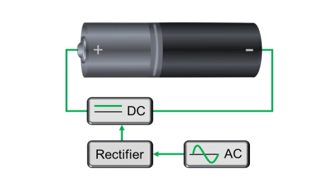
CHARGING MODES
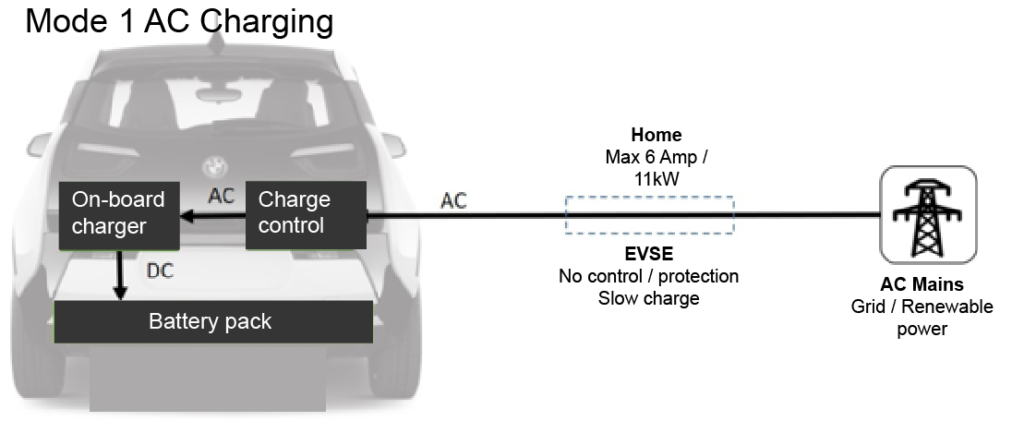
Mode 1 AC Charging
Mode 1 AC Charging does not require EVSE (Electrical Vehicle Supply Equipment) to provide protection and communication with the EV. It relies on the Earth Leakage Circuit Breaker of the home’s existing electrical installation for safety protection. Maximum current is limited to 6 Amps, making it extremely slow and therefore seldom used to charge modern EVs.
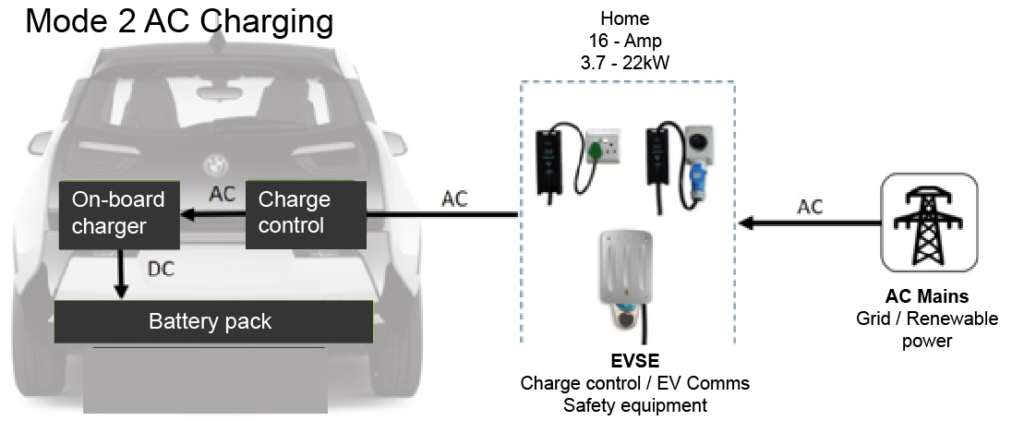
Mode 2 AC Charging
Mode 2 AC Charging specifies an integrated EVSE to provide safety protection and communication with the EV. Charging current is between 6 and 32 Amps, determined by the available power and the EVSE’s current rating.
Mode 2 AC Charging devices include the Occasional Charger supplied with your EV as well as Portable, Fast Portable and Wall Chargers supplied by Mober
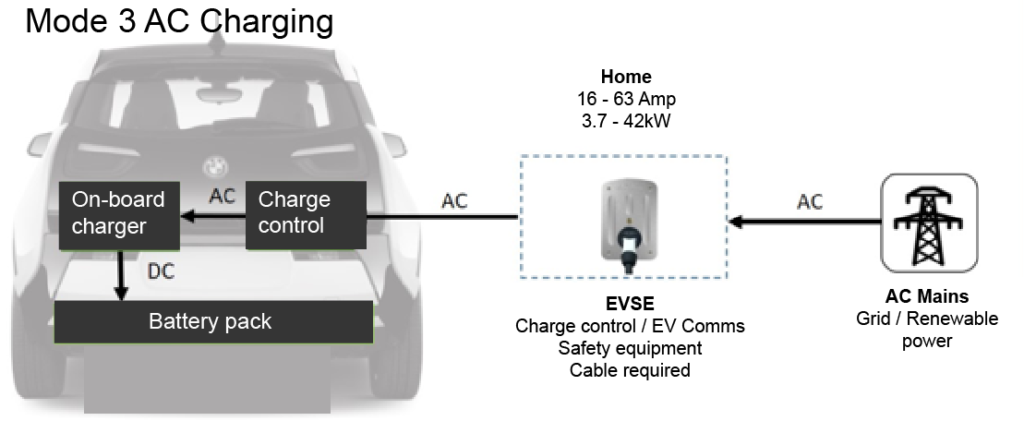
Mode 3 AC Charging
Mode 3 AC Charging is similar to Mode 2 AC Charging except that it requires the user to plug in a Charge Cable to provide power to the EV. The EVSE provides protection and communication with the EV. It also detects the current capacity of the Charge Cable to ensure that the supply current remains within the limitations of the Charge Cable. Charge current is between 6 and 63 Amps, determined by the available power supply and the EVSE’s current rating.
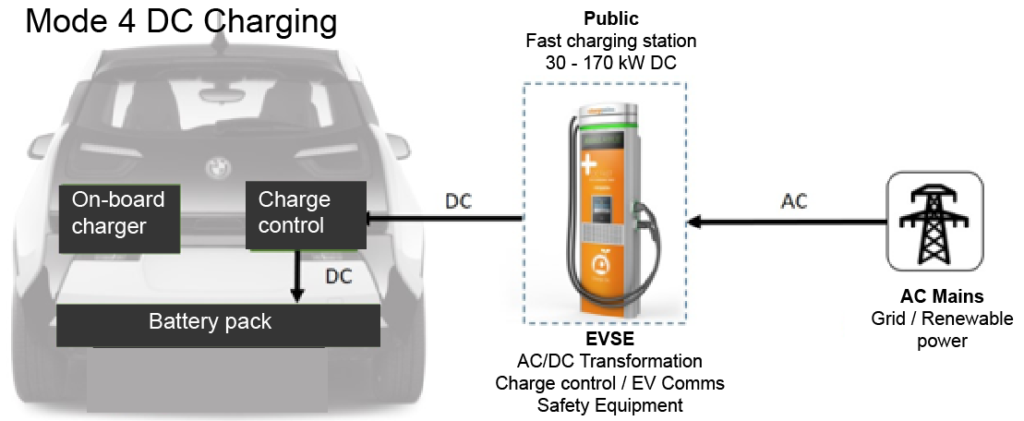
Mode 4 DC Charging
Mode 4 DC Charging is the fastest (high powered) way to charge EVs quickly, with charging current ranging from 50 to 350 kW. It specifies an integrated EVSE to provide safety protection and communication with the EV. Its application is limited to public charging stations due to high capital costs and electrical infrastructure requirements.
Mober can supply Mode 4 DC Chargers on request.
CHARGING PLUGS
Type 2 EV Plug
The Type 2 Plug is the standard plug for charging EVs within the European Union and South Africa. The plug is defined by standard SANS 62196-2 (IEC 62196-2).
The plug is designed to provide single or three-phase AC power up to 70 Amps.
Although the plug is designed to also supply DC power, vehicle manufacturers prefer the Combined Charging System (CCS) Combo 2 plug as the standard DC plug due to its higher power capacity.
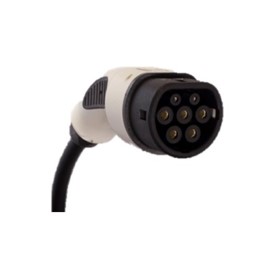
Type 1 EV Plug
The Type 1 Plug is the standard plug for charging EVs in North America (Standard SAE J1772). In South Africa only the first generation Nissan Leaf uses this this type of charge plug.
The plug has a thumb-controlled disconnect button, which commands the On-board Charger of the EV to stop drawing current immediately when removing the plug from the vehicle.
Electric power is provided as single-phase AC only (no three phase option). For DC charging the Combined Charging System (CCS Combo 1) plug is gaining acceptance.
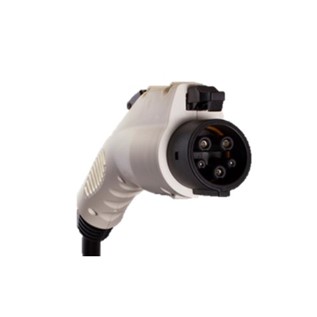
DC charge plugs supply DC (Direct Current) electricity, which is the type of electricity that enables fast charging of electric vehicles at public fast charging stations. DC charging is not limited by the On-board Charger capacity of the EV, enabling the fastest possible EV charging. Your typical EV can be charged to 80% capacity in less than an hour at a DC fast charge station.
CCS Combo 2
The CCS (Combined Charging System) Combo 2 plug is an extension of the Type 2 plug, with two additional direct current (DC) contacts to allow high-power DC fast charging up to 80A or 350kW.
This plug is utilised at public fast DC charging stations, including charging stations installed by BMW and Jaguar throughout South Africa.

CHADdeMO
CHAdeMO is an abbreviation of “CHArge de MOve”. It is the standard DC charging plug adopted in Japan, and allows for charging capacities up to 125A or 62.5kW.
In South Africa, only the 1st generation Nissan Leaf has adopted this plug standard.
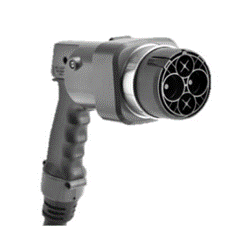
CCS Combo 1
The CCS (Combined Charging System) Combo 1 plug is an extension of the Type 1 plug, with two additional direct current (DC) contacts to allow high-power DC fast charging up to 80A or 350kW.
The Combo 1 plug is gaining acceptance in North America and Asia. It is not used in South Africa since the country has adopted the Type 2 plug standard.
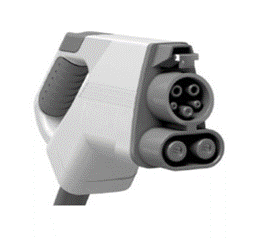
Tesla Plug
Tesla developed a proprietary plug for its impressive Supercharger network in North America. In Europe it adopted a reinforced version of the Type 2 plug, with higher DC charging capacity. However, in November 2018 Tesla confirmed that the Model 3 sold in the European market will come with a CCS Combo 2 socket, which is also the standard for DC charging in South Africa.

